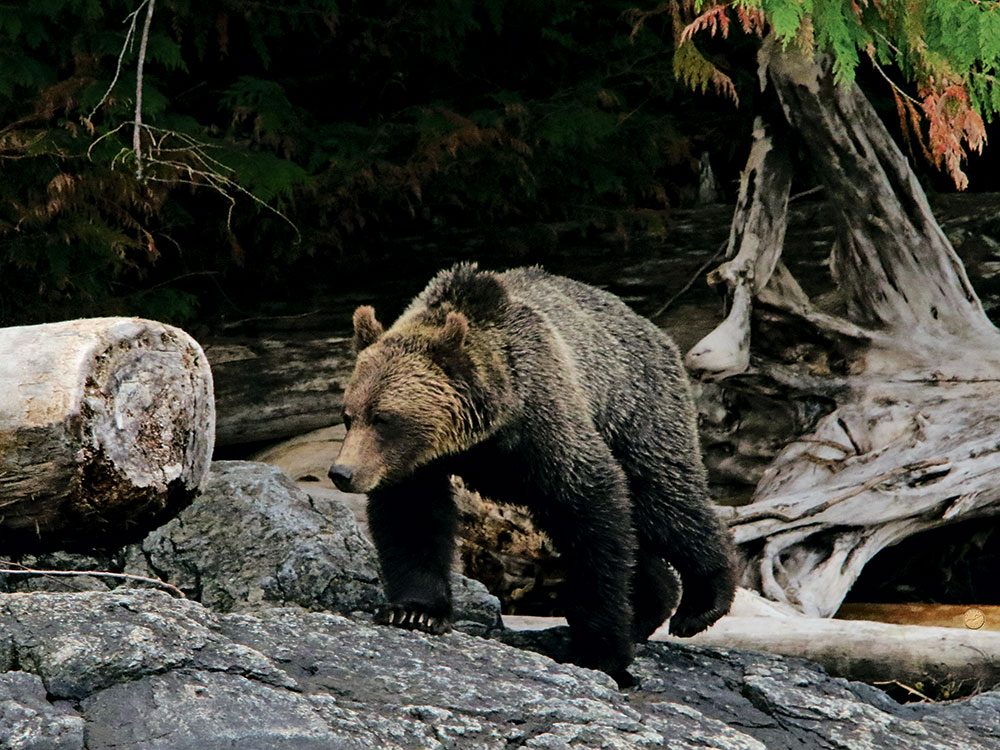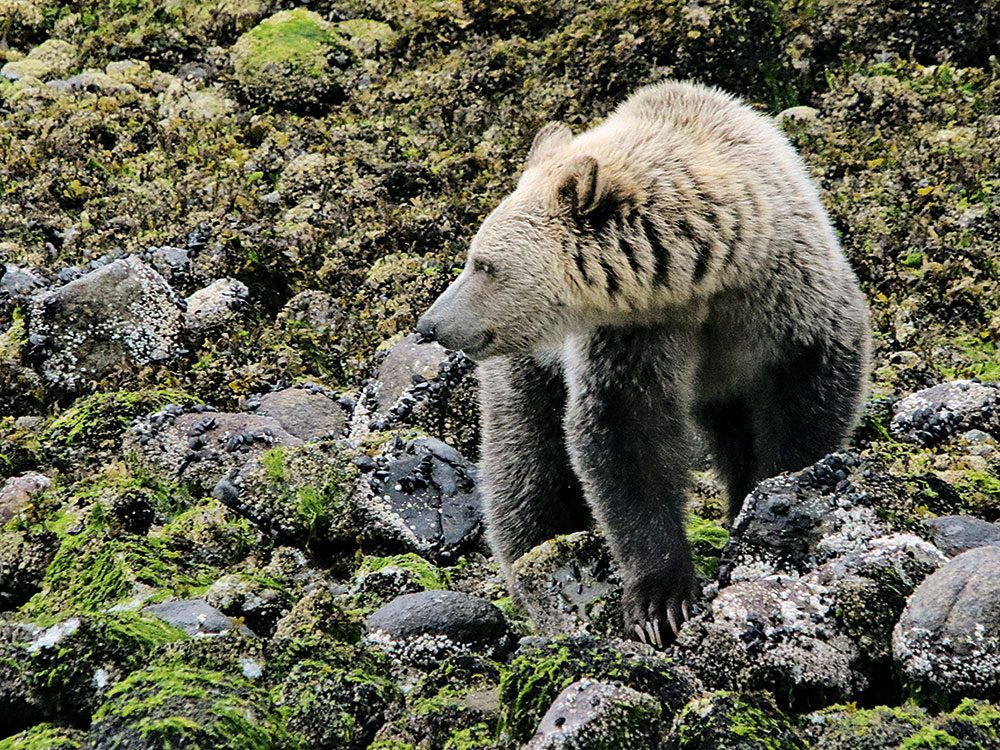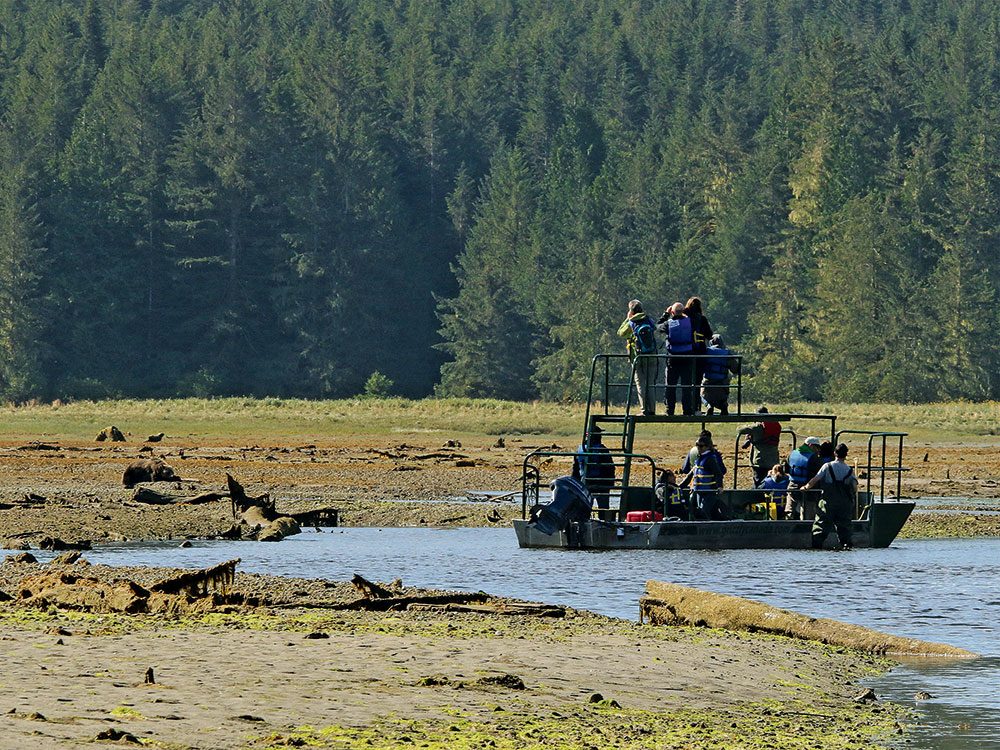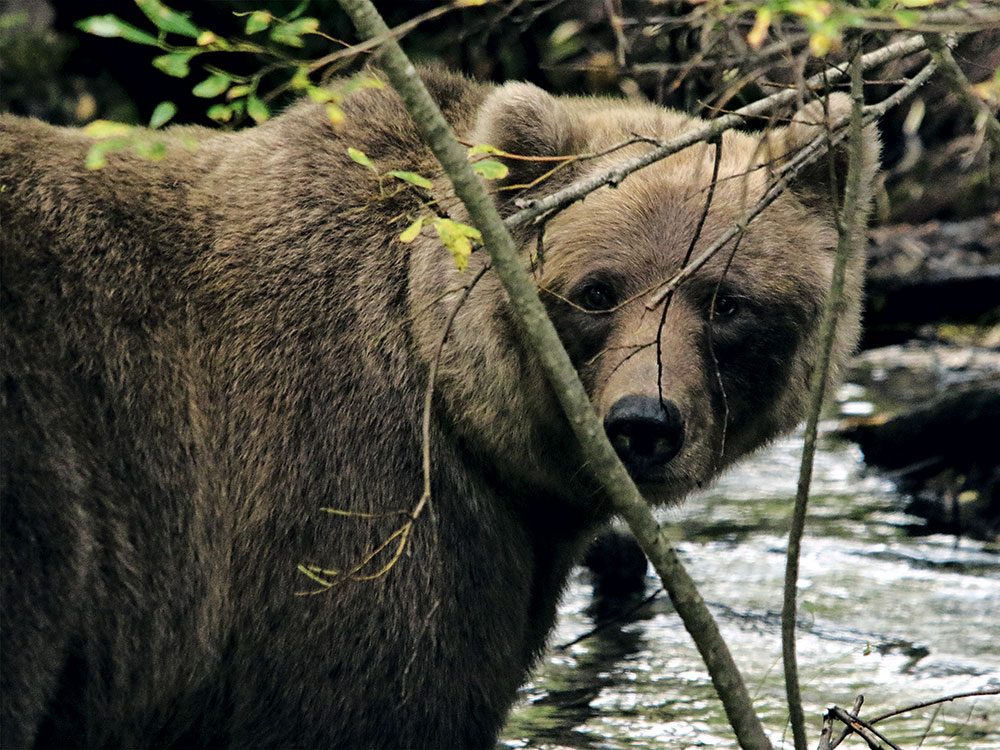
How to Get to Great Bear Rainforest
After watching a documentary on television about the Great Bear Rainforest, situated on the north and central coast of British Columbia, I started to look into how I could get there. I wanted to view the grizzlies in their natural habitat, along with all of the other amazing ecology in this spectacular region of Canada.
In the last few years, I have become very interested in wildlife photography and figured this would be an adventure that would allow us to see this coastal rainforest and maybe even the elusive kermode bear. Otherwise known as the “spirit” bear, this unique black bear has a recessive gene that gives it a white-coloured coat.
In preparation and planning for our trip, my research led me to a company based in Telegraph Cove, B.C., on the northeast corner of Vancouver Island, called Tide Rip Grizzly Adventures. This company has been exploring the Knight Inlet and observing coastal grizzly bears for nearly 20 years.

Where to Stay in Great Bear Rainforest
After a two-day drive from Calgary to Telegraph Cove, my wife Wendy, my mother-in-law Karen and I arrived in this secluded, quaint jewel of British Columbia to meet up with some friends from Idaho, who were also interested in bear-viewing.
Telegraph Cove Resort is a group of historic houses and hand-crafted cabins all situated on a boardwalk around the cove and marina. Surrounding the boardwalk is a variety of local businesses offering whale watching, a café with outstanding food and service, a small grocery/liquor store and souvenir shops. Our cabin, the Ogawa House, was built in 1931 and belonged to the Ogawa family who came to Canada from Japan to work at the then-Beaver Cove Pulp Mill. The mill closed in 1945 and never reopened.
After checking into our cabin and unpacking, we stopped in at the Tide Rip office to confirm our departure time for the next day.
Don’t miss the incredible story of how one man struck up an incredible friendship with a wild black bear.

Close Encounters
The tour starts early in the morning and is about an 80-kilometre, two-hour boat ride up the Knight Inlet to Glendale Cove, where the bears live. Along the way on the coastline, we spotted black bears, sea otters, bald eagles, humpback whales and orcas! Our captain, Jackie, and nature conservationist, James, were friendly and extremely knowledgeable about the region, the ocean area and wildlife.
Once we arrived in Glendale Cove, we transferred from our ocean boat to a flat-bottomed skiff, or viewing boat, which allowed us to get in close to the feeding families in the shallow estuaries. Within a few minutes of arriving in Glendale Cove, our first mother bear, named Bella, and her two cubs came out of the woods and started eating their sedge grass, seaweed and crab meal. From the boat, we were able to take photographs for as long as we liked. The bears were aware of our presence, but are accustomed to people and were not bothered by us observing them in their natural surroundings. It was truly amazing to see the mother lead the way by turning over rocks, looking for mussels and crabs, and then watching the young cubs follow her and copy her every move.
After 45 minutes or so, we moved along to another spot in the cove where we ran into another mother and her cub. They were foraging along the rocky, seaweed-laden beach, also turning over the rocks looking for mussels and crabs. Our group viewed this pair for another hour or so from our skiff, making sure to keep our distance off shore, yet close enough to hear them grunting and moving the big rocks out of the way. What an amazing opportunity to view these beautiful, majestic animals.
Check out the 10 places in Canada every Canadian needs to visit.

A True Jewel of British Columbia
When we finished lunch, we reloaded our skiff and went out for an afternoon viewing. Fortunately for us, we were able to see Lenore—the matriarch of the Glendale Cove grizzlies. The huge sow was napping at the head of the river’s inlet at low tide, waiting patiently for the salmon to start running. What was truly amazing was that the water level was so low; Jackie jumped out of the skiff and manually pushed us into a more optimum spot for viewing the big, snoozing bear. Unfortunately, the salmon weren’t running yet and after about an hour of lying around, she woke up, had a drink from the river and wandered off towards the forest.
Wendy, Karen and I cannot say enough about the hospitality of the staff at Tide Rip Grizzly Tours, as well as the staff at Telegraph Cove Resort and the Killer Whale Café. All were so friendly and inviting—I can’t stop referring to this area as a true jewel of British Columbia.
To be able to see the Great Bear Rainforest and experience the abundant wildlife in its natural habitat, and to learn about the history of this pristine Canadian location, was truly a once-in-a-lifetime experience. We will have to return, however, to track down the elusive spirit bear.